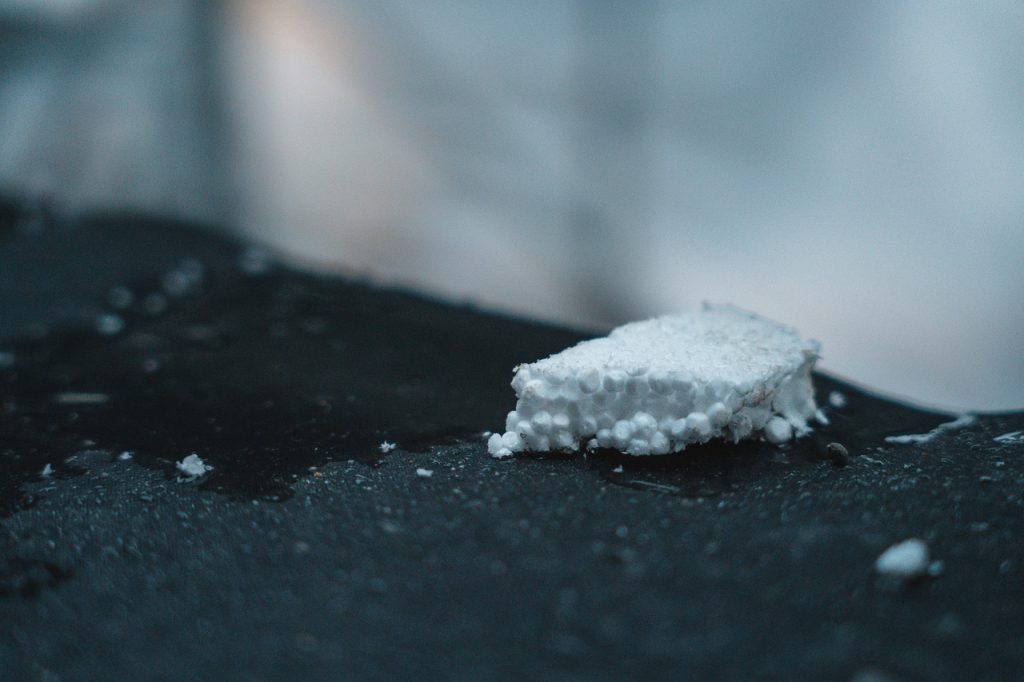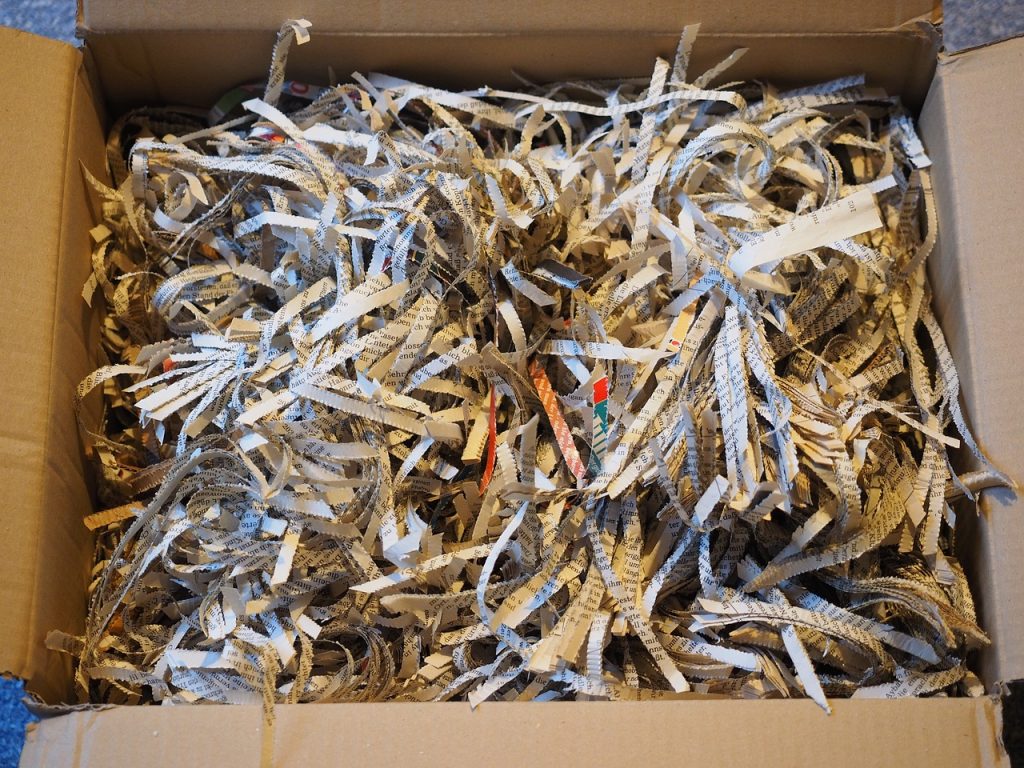- Determine if your local recycling facility accepts Expanded Polystyrene (EPS), also known as Styrofoam.
- Collect all Styrofoam material in your household, ensuring it’s clean and dry.
- Segregate your EPS products, as some types of Styrofoam can be recycled, while others cannot.
- Rinse off Styrofoam items, let them dry completely, and bag them separately in clear plastic bags.
- If your local facility doesn’t accept Styrofoam, find mail-back programs and drop-off locations that do.
Introduction to Recycling Styrofoam at Home
Recycling Styrofoam at home is not as complicated as it may seem. Here’s an introduction to how you can make a difference from the comfort of your home, turning what’s typically thrown away into something that can be recycled and reused. You may be thinking, “how to recycle Styrofoam at home?” Well, it’s not as challenging as you might think.
First and foremost, recycling begins at home. Yes, you heard it right – home. Your very own space can be the breeding ground for recycle initiatives, starting with products like Styrofoam that you might have thought are not recyclable. With some effort, Styrofoam recycling can be done right at home. The key here is understanding styrofoam and its properties.
Society often overlooks the potential of items to be recycled simply because we’re unaware of how the process works. But when you delve into styrofoam recycling, it opens up opportunities to do your part in reducing waste. It’s time to change these perceptions of the traditional stylistic approach towards waste and come up with innovative ways of recycling, reusing, and converting trash into valuable resources.
In conclusion, there is a real need to educate ourselves and work hand in hand to recycle using the resources we have at home. As insignificant as Styrofoam may seem, it’s time to change our home’s narrative and contribute towards a greener environment through Styrofoam recycling at home.
Recyclable Styrofoam items: An Overview
Recycling styrofoam, also known as expanded polystyrene (EPS), seems like a daunting task, doesn’t it? But it’s not as difficult as you might think. In an attempt to reduce waste, local communities are striving to recycle styrofoam for future use. But, not all styrofoam is recyclable. You can determine the recyclability of an item based on its recycling symbol, usually located on the bottom. Those marked with the number 6 are recyclable styrofoam.
Most often, we encounter styrofoam in the form of food service items, like cups and containers, packaging materials for shipping, and in cooler boxes. Unfortunately, food-service items are tricky to recycle due to food contamination, so they usually go to waste. However, one can dispose of clean styrofoam cups or packing peanuts at local recycling centers. Some mail-back programs also accept these.
When it comes to larger chunks of styrofoam like those used for electronic packaging, these too can be taken to your local EPS recycling facility. However, remember to keep styrofoam separate from other waste materials to avoid contamination and facilitate disposal. Thus, while recycling styrofoam at home might require a little effort, every small step contributes significantly towards reducing styrofoam waste on our planet.
How to Recycle Styrofoam: A Step-by-Step Guide
Recycling Styrofoam at home isn’t a well-known method, but it’s certainly achievable. The process of recycling Styrofoam doesn’t just help rid the environment of this non-biodegradable waste, but it also helps convert it into reusable items. So, how to recycle Styrofoam at home? Let’s dig in!
Firstly, you’ll need to determine if your local recycling facility accepts Expanded Polystyrene (EPS), also known as Styrofoam. If so, great! Collect all Styrofoam material in your household, and ensure it’s clean and dry. Seggregate your EPS products, because while some types of Styrofoam can be recycled, others cannot. Commonly accepted items include Styrofoam cups, food trays, and packing peanuts.
Just rinse them off, and let them dry completey. Keep in mind that Styrofoam with food residue or stains can’t be recycled. When it’s clean, bag it up separately in clear plastic bags. Now, it’s ready to be taken down to the recycling site.
On the other hand, if your local facility doesn’t accept Styrofoam, don’t worry! There are mail-back programs and drop-off locations that accept EPS for recycling. Research for these services and start shipping your Styrofoam waste today.
That’s the step-by-step guide on how to recycle Styrofoam at home. Make recycling a regular habit, and let’s help save our environment!
Tips to Effectively Recycle Styrofoam
Recycling Styrofoam is not as difficult as you might think, and being able to recycle Styrofoam at home is definitely a helpful way to manage waste. Styrofoam, or EPS as it’s technically known, is a very common material. It’s in everything from coffee cups to packing peanuts, and it generates a lot of waste. Therefore, knowing how to recycle styrofoam is crucial for a greener future.
There’re a few helpful tips to effectively recycle styrofoam. Firstly, it’s crucial to ensure that the Styrofoam you’re trying to recycle is clean and free of any non-Styrofoam materials. You don’t want to contaminate your recycling with other types of waste. You can usually accomplish this by simply rinsing the items with water and removing any labels or stickers.
Secondly, the styrofoam needs to be in the right condition. If it’s crushed or broken down significantly, it may not be able to be recycled. Try to maintain the integrity of the items as much as possible.
Finally, it’s good to remember that not all recycling facilities accept Styrofoam, so it’s important to check with your local recycling center or waste management facility to see if they’ll take it. It won’t do any good to recycle styrofoam if it’s just going to end up in a landfill, so make sure you’re recycling responsibly.
Styrofoam and Plastic: The Recycling Dilemma
Styrofoam and plastic waste are causing a major recycling dilemma worldwide. It’s true that styrofoam recycling isn’t as straightforward as recycling other materials, but it’s certainly possible, and it starts at your local level. The trick is to understand the variations between different styrofoam products and how each one affects the recycling process.
With so much plastic waste around, one would think that plastic recycling would be a priority. Unfortunately, it’s not as easy as it sounds. While 1 and 2 level plastics are highly recyclable and accepted by most local recycling programs, other plastics are not as straightforward. It’s this complicated process that has earned plastic and styrofoam a reputation as problematic to recycle.
Styrofoam, in particular, is a recycling challenge. It’s lightweight, making the cost of capturing and transporting it for recycling high compared to its value. However, local community recycling programs and technology advancements are opening new doors for styrofoam recycling and other challenging materials. Armed with the right information, we can all be a part of the solution to the styrofoam and plastic waste problem by stepping up our recycling activities.
Together, we can turn the dilemma of styrofoam and plastic recycling into an opportunity for a more sustainable future.
Methods to Recycle Styrofoam and Plastic at Home
If you’re wondering how to recycle Styrofoam and plastic at home, there are several methods at your disposal, some of which are surprisingly innovative. Let’s start with Styrofoam. One of the best ways to recycle Styrofoam is by converting it into a glue. To accomplish this, you’ll need to dissolve the Styrofoam in a solvent, a process you can carry out in the safety of your own home. This recycled Styrofoam adhesive can then be used in a myriad of applications. By recycling your own Styrofoam, you not only help to lessen the environmental impact, but it also adds to the list of recyclable items one can manage at home.
Recycling plastic can be a tad more complex. Many types of plastic aren’t suitable for the traditional recycling route so you’ve got to think outside the box. You can use plastic in DIY projects, or even melt it down to create new items. Do be cautious and inform yourself about the type of plastic you’re planning to recycle, as some can release harmful toxins when heated.
Ultimately, the methods to recycle Styrofoam and plastic at home can be practical, safe, and beneficial for the environment. So go ahead, recycle, recycle, recycle!
Styrofoam Composting: An Alternative Solution
Did you know that an alternative solution to the huge amount of styrofoam waste that ends up in landfills every year is composting styrofoam? It’s true – styrofoam doesn’t have to be the problem it’s often seen as. Instead, it can be composted, providing valuable organic material for your garden and reducing the reliance on non-biodegradable plastics.
Styrofoam, a form of plastic, falls under the broader category of ”polystyrene”. The issue here is that most people don’t know what to do with styrofoam and often, it simply ends up as unrecycled waste. However, numerous studies have shown that styrofoam is compostable under certain conditions. To use styrofoam in composting at home, the styrofoam must first be broken down into smaller pieces. These pieces will then be spread thinly across the compost pile, and organic material, like food waste, is added.
Through composting, styrofoam becomes a valuable resource instead of an environmental problem. It contributes to the creation of nutrient-dense soil for growing plants and helps in cutting down the use of harmful chemical fertilizers. Remember, it’s crucial that the styrofoam is free from any chemical additives before it’s composted. So the next time you have some styrofoam on hand, think twice before throwing it away – your plants may just thank you for it!
Effective Composting Techniques for Styrofoam
Styrofoam, or EPS as it’s also known, is often considered waste in most households. Its unique plastic composition makes it a troublesome material to recycle. Traditionally, plastic and styrofoam aren’t considered ideal materials for home composting. However, with proper techniques, you can work towards reducing the volume of styrofoam waste.
One of the most effective composting techniques is the use of mealworms. These tiny creatures have the ability to digest and break down styrofoam into organic waste suitable for compost. Another method is by shredding styrofoam and mixing it with other compostable items. This helps to break down the styrofoam faster.
While it’s possible to compost styrofoam at home, it’s important to be mindful of the quantity. Too much styrofoam can disrupt the balance of your compost mixture and inhibit the decomposition of other materials. Moreover, it’s crucial to ensure that the composting process properly breaks down the styrofoam, as improper decomposition can lead to harmful residues.
Ultimately, the more we understand about effective composting techniques, the better we can manage styrofoam waste. So, before discarding your next eps container or styrofoam packing materials, consider turning it into a valuable resource for your garden.
Packing with Styrofoam: Recycling Considerations
Styrofoam, especially used in packing, is a material that needs serious recycling consideration. Despite its wide usage, we often overlook how to effectively recycle Styrofoam, leading to detrimental environmental consequences. To combat this, looking into ways to recycle styrofoam at home could be our first step.
When packing with styrofoam, one can’t ignore the impact it has on the environment. The massive quantities of these materials that aren’t recycled pose a significant challenge. However, thanks to extensive research on materials’ recycling, practices and techniques to recycle styrofoam are increasingly available. We’ve all become used to plastic recycling, but styrofoam recycling is just as important.
A crucial factor in recycling styrofoam from packing materials is knowledge. Before you can begin to recycle, it’s essential to understand what you’re dealing with. One should recognize the difference between styrofoam and plastic, as they require different recycling methods. If you’ve closely followed our step-by-step guide on styrofoam recycling and alternative solutions like composting, you’d be aware of how to do this at home.
Recycling styrofoam doesn’t only help minimize environmental damage but also aids in resource conservation. So, the next time you’re packing with styrofoam, make sure you consider recycling and remember the tips shared with you.
Recycling Events: Turning Styrofoam Waste into Composting Material
Are you familiar with recycling events? These are initiatives designed to encourage communities to participate in the eco-friendly practice of recycling. Lately, these events have begun highlighting a not typically recyclable material: Styrofoam. Here’s where the notion of turning Styrofoam waste into composting material comes into play.
Every year, large amounts of waste are generated from Styrofoam. Despite its reputation for being non-biodegradable and detrimental to the environment, it’s possible to recycle Styrofoam at home, transforming it into a valuable composting material. Everywhere you look, Styrofoam is part of various products we use daily. It’s critical to recycle this material to reduce environmental harm and encourage sustainability.
At these recycling events, organizations often provide resources and guides on how to effectively recycle Styrofoam at home. They’ll show you the practical ways to compost Styrofoam, yielding useful materials for gardening and farming. Even if you’re a sceptic about Styrofoam composting, it’s worth learning about these effective composting techniques.
Here’s a thought: Next time you’re packing with Styrofoam or disposing of certain types of waste, remember that it’s possible to recycle them. Instead of adding to the world’s waste problem, you could be creating beneficial composting materials right at your very home.
Styrofoam Recycling: Getting Started at Home
Getting started with styrofoam recycling at home can seem daunting, but it’s not as complex as you might think. Although styrofoam is often associated with plastic, it’s comprised largely of air, making it surprisingly lightweight but bulky. This bulkiness often leads to health and environmental concerns as it takes up vast amounts of landfill space. Despite these complications, with some diligence, it’s entirely possible to effectively recycle styrofoam in your own home.
To kick off your styrofoam recycling journey at home, start by understanding what styrofoam items are recyclable. You’d be surprised to learn how many commonly disposed of items can, in fact, be recycled. Next, familiarize yourself with various methods to recycle styrofoam and plastic in your home. And don’t forget to keep in mind the tips shared in the section “Tips to Effectively Recycle Styrofoam.”
For avid gardeners or those looking for an alternative, styrofoam composting could be an intriguing option as detailed in the section “Styrofoam Composting: An Alternative Solution”. There’s also the chance to participate in various recycling events, which often provide opportunities to turn styrofoam waste into composting material.
Let’s not forget packing with styrofoam – there are certain considerations to keep in mind regarding recycling. So, arm yourself with knowledge and dive into styrofoam recycling at home!




